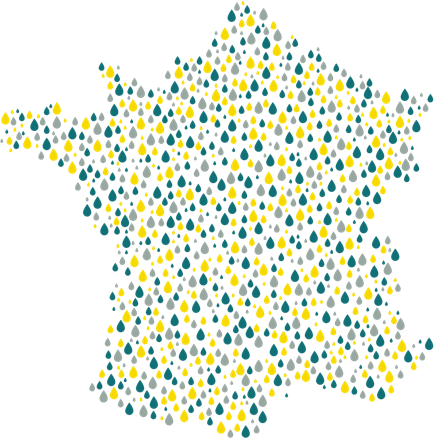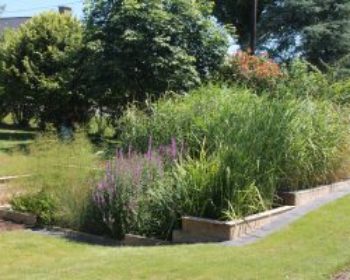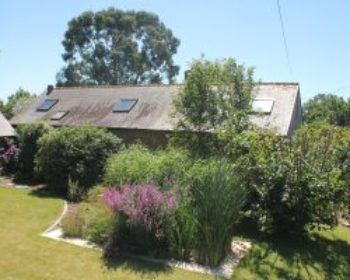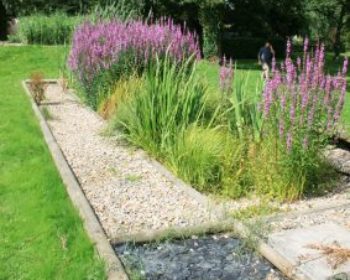Sanitation Garden
Is your individual sanitation no longer up to standard and you need to replace it? Are you building a house that is not connected to mains sewerage? Do you have an agricultural, semi-collective sanitation project for a holiday cottage, campsite, etc.?
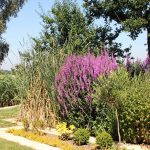
Iris Line
No tank · No emptying · No odour · No mosquitoes
- System approved by the Ministries of the Environment and Health
- Diversity of semi-aquatic plants
- Several possible finishes (materials, ornaments, plants, etc.)
- Made-to-measure
Beautiful and sustainable
Made in France

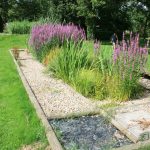
Benefits
- Adaptation to load variations (absence, second home, etc.)
- No energy consumption or chemical reagents
- The most robust and reliable system, according to the IRSTEA (French research laboratory) 2017 study
- Very low operating cost
- No sludge to empty
- Simple gardener-type maintenance
- Landscape integration
- Biodiversity garden
- Eco-friendly, beautiful and sustainable
Fonctionnement
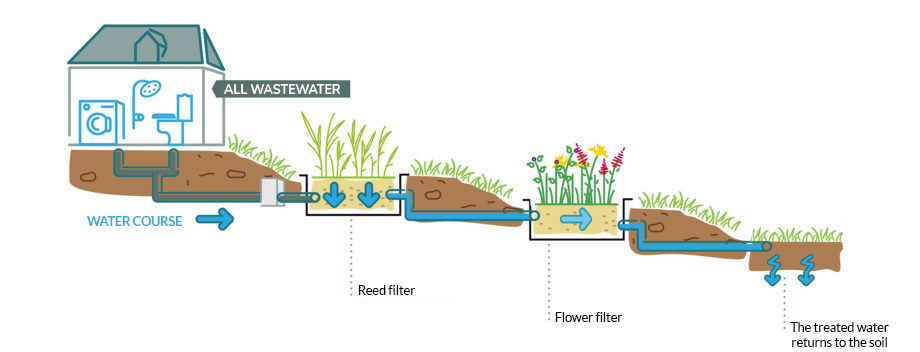
The reed filter is filled with gravel, chippings and sand, and constitutes a real colander for wastewater to pass through. All the soluble matter will be digested by the bacteria and microorganisms present in the sand around the roots of the reeds, while the insoluble matter will be retained on the surface, where it will compost.
The filter is in the open air to ensure treatment in the presence of oxygen and guarantee the absence of odours.
The water that comes out of this colander is treated and can return to the soil but, as it still contains some nutrients, we can choose to recycle them in a second flower filter to brighten up your garden. The water passes under the gravel in the filter, directly by the roots of the plants where a multitude of microorganisms live and continue the treatment as far as possible.
The combination of these two filters ensures optimum results in terms of wastewater treatment, and this is proven by the 2017 study by the French sanitation research organisation (IRSTEA) which demonstrated that this system obtained the best results!
